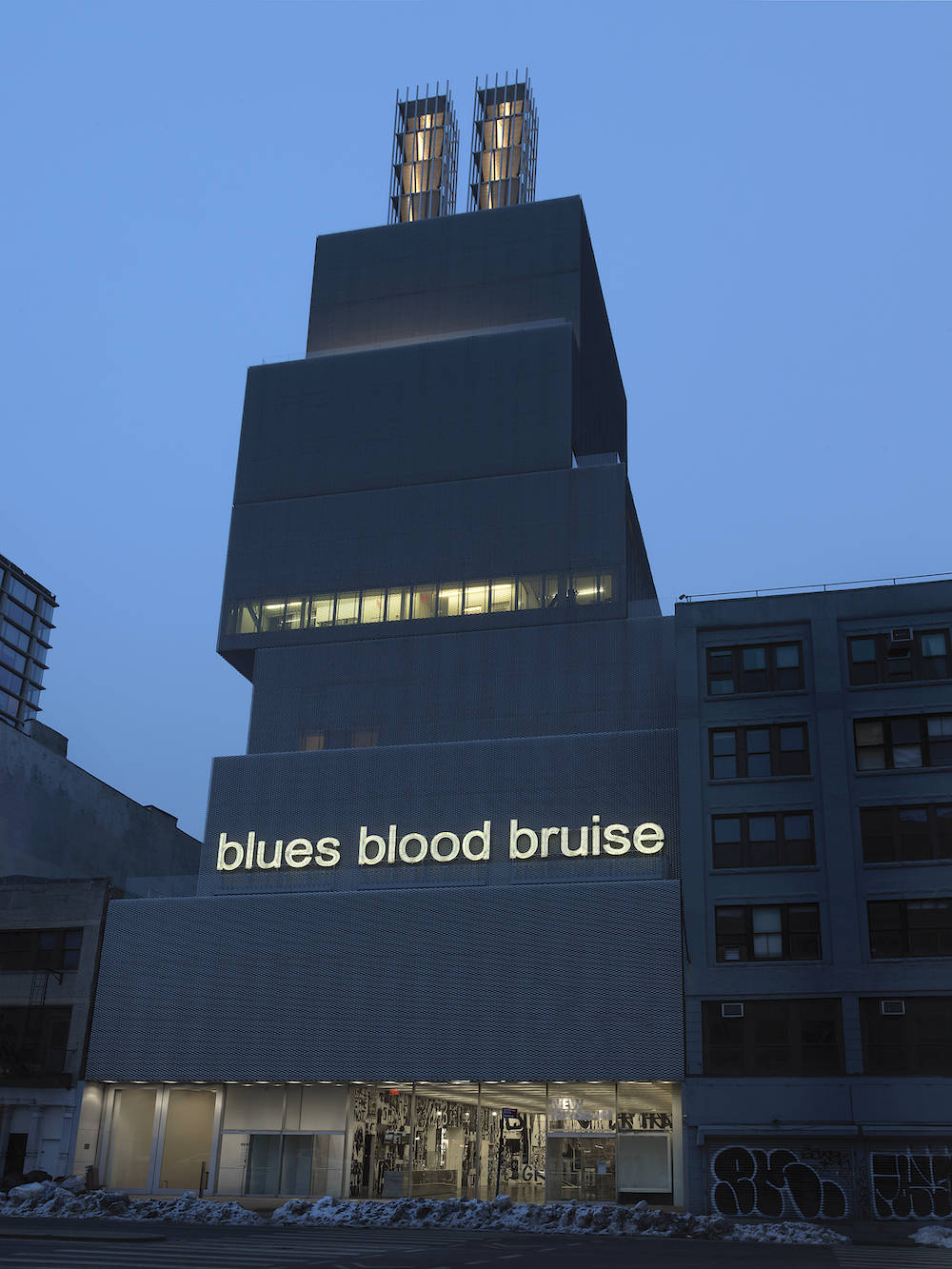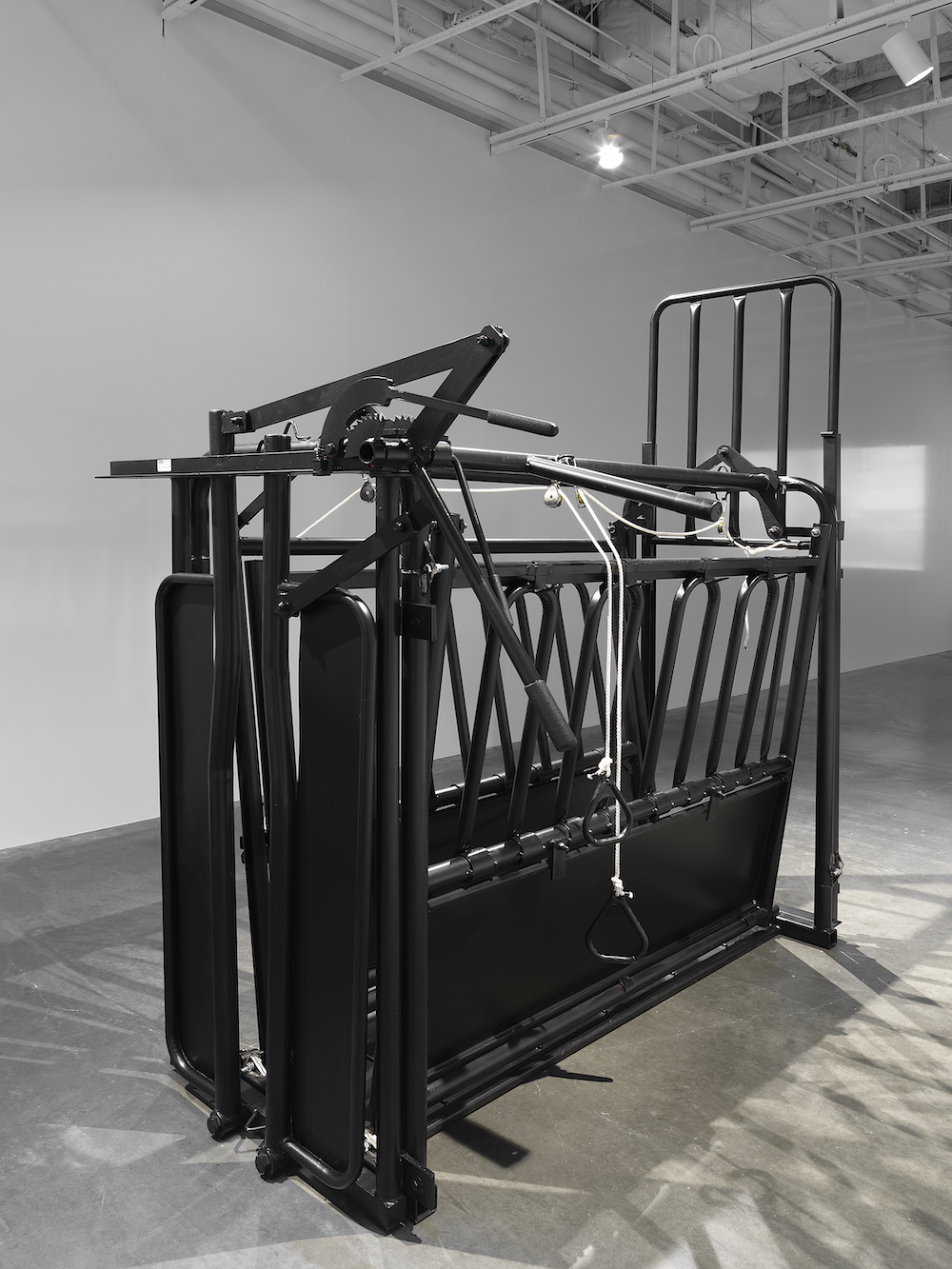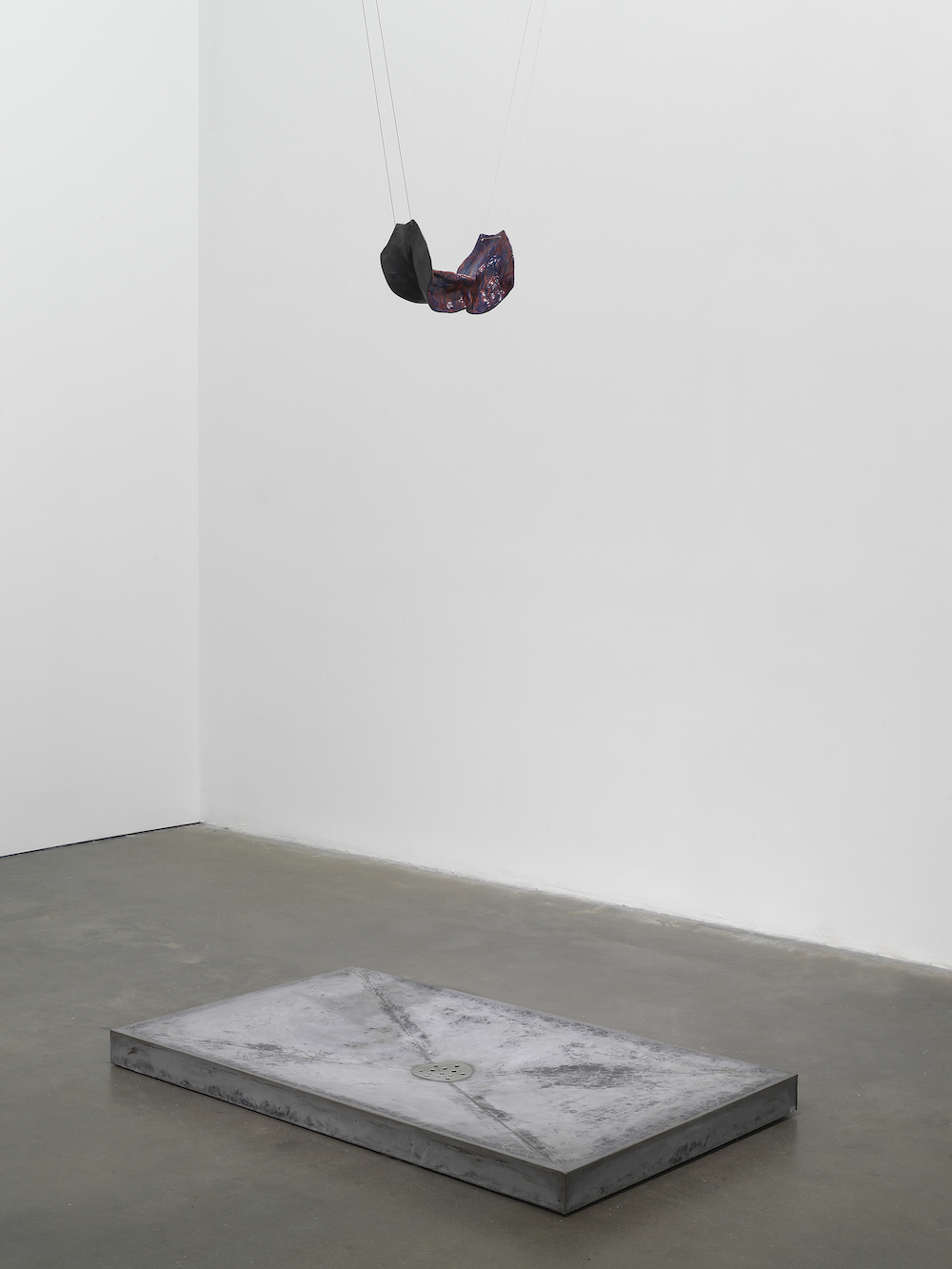Grief and Grievance: Art and Mourning in America, 2020
By Okwui Enwezor
264 pages
Phaidon/New Museum, New York
In a pivotal scene in Francis Ford Coppola’s film The Godfather a Mafia don grieves over the body of his dead son. “Look how they massacred my boy,” the weeping father intones, and the audience grieves with him. A worldwide audience is moved by the pantomime death of a handsome movie actor.
Another dead son, this one truly dead and made so just a few years after the theatrical death, is viewed in an open coffin. He is just a boy, and he is disfigured, gruesomely distorted. He is missing an eye, he is swollen, and he is, was, real. Upon the perpetrators there is no comeuppance visited. There is no justice.

“Grief and Grievance: Art and Mourning in America,” 2021. Exhibition view: New Museum, New York. Photo: Dario Lasagni
In Grief and Grievance: Art and Mourning in America—a piercing title that recalls the Reagan era—the late author and curator Okwui Enwezor had envisioned an exhibition where writers and artists excavate, examine and enliven the antithetic of Black and America. His death at age 55 prevented his completion of the project but it has been dutifully and beautifully realized by Naomi Beckwith, Massimiliano Gioni, Glenn Ligon and Mark Nash.

Tiona Nekkia McClodden, THE FULL SEVERITY OF COMPASSION, 2019 in “Grief and Grievance: Art and Mourning in America,” 2021. Exhibition view: New Museum, New York. Photo: Dario Lasagni.
The book by Phaidon and exhibition at the New Museum feature the work of essayists and artists whose work is both moving and haunting. Considering the historical similarities between Black deaths in the antique and the contemporary, Saidiya Hartman, in her essay, Dead Book Remains, conflates the horrors visited on past and present Black bodies as being something to be expected; that while their labor may have value their personhood does not. In My Soul Looks Back in Wonder Naomi Beckwith records the evolving status of images of negritude, from persecution to resistance, and specifies how the co-option of Black pain as seen in the Whitney Biennial’s choice of artist Dana Shutz’ Open Casket (2016) painting of the decomposed Emmett Till was so cack-handedly considered; a throwback souvenir for unreconstructed white folks, like baseball manager John McGraw’s lynching rope souvenir, or dreadlocked ski-bums in Vail.
The artworks featured include The Full Severity of Compassion (2019) by Tiona Nekkia McClodden, a fully blackened cattle squeeze chute, suggestive of bodily coercion, experimentation and consumption. Similarly haunting is Drainer (2018) by Julia Phillips, a ceramic cast of a woman’s torso suspended above a concrete shower drain, a peculiar bodily dissection of unknown or willfully dismissed history.

Julia Phillips, Drainer, 2018 in “Grief and Grievance: Art and Mourning in America,” 2021. Exhibition view: New Museum, New York. Photo: Dario Lasagni.
Many of the artists included are so widely known that their contributions become less powerful. Celebrity transforms their work into spectacle, clouding the visceral bite they might otherwise convey. The majority of works and essays, however, reach deeply into our sensibilities, insisting that we either embrace or dismiss, to vehemently choose sides.
Yet the rise of righteous protest and demand versus the naked and eager retaliation that it faces has not prefigured a concluding détente but a death spiral of the republic, suggesting that any hope of equity will ultimately devolve into a tense and simmering stalemate.


